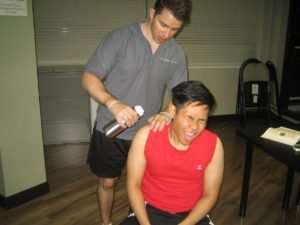It is important to note that burns are among the common injuries while camping. Cooking and camping in the outdoors can be dangerous, especially if the individual plans to cook over an open fire or if he/she lights a campfire for heat. Since most have to depend on a limited wilderness first aid kit or improvise the gear while in the outdoors, managing a burn might be different in an indoor setting, but most of the general treatment principles are the same.
Prevention of backcountry burns
It is important to be careful when around open flames such as campfires or camping stoves when cooking food. Make sure that everybody in the group knows how to operate the stove properly and have all the appropriate tools.
You have to clear out grasses, brush and other flammable materials within a 3 foot radius from the fire. Pitch the tent upwind of a campfire and ensure that it is in a safe distance from any sparks that might jump from the fire. Make sure that the individual has a plan for escape if the tent starts on fire and be prepared to cut through the tent material to escape if needed.

Camping burns
Camping burns typically occur around the campfire. Cooking at night without adequate light source or cooking in a tight space can be a challenge even for experienced campers. Cooking injuries can be avoided by knowing how to use the stove properly and cooking on a solid, even surface.
Treatment of backcountry burns
There are measures to bear in mind in treating shock, burn pain as well as promote healing and provide protection against infection.
- In case clothing is on fire, the common advice is to stop, drop and roll. Do not run but simply drop to the ground and roll out in order to put out the fire.
- You can stop the burning process by cooling the burned skin with cold water. Utilize water that has been purified for drinking and pour it over the burned area in a steady stream for 5-10 minutes.
- Soak clean clothing or dressing in cool, purified water. Place the dressings as a compress over the burn.
- In case clothing is burning together with the skin, you have to wait before removing it until the burn is cooled in order to prevent pulling off the skin. You have to apply a wet compress over the top of the clothing that is stuck to the burn to soften it and then remove the clothing.
- Assess the severity of the burn and plan out immediate evacuation for the following types of burns – burns on the face or genitals, burns that cover most of the foot or hand, charred burns, burns that go around the waist or cover a leg, arm or ankle and burns that cover an area bigger than the chest.
- When it comes to substantial burns, allow the individual to lie down and elevate the affected area above the level of the heart. Treat the individual for shock by covering him/her in warm blankets and keep him/her hydrated.
- Dress the burn to prevent infection until further medical care can be sought especially if the burn will be exposed to dirt and other elements in the backcountry. Utilize a sterile dressing or the cleanest material available. Cover the burned area and secure in place with an adhesive tape.
- In case there are blisters, instruct the individual not to puncture them.
- Minimize the pain from the burn by taking over-the-counter pain medications, but seek medical care before applying ointment over the burn.
